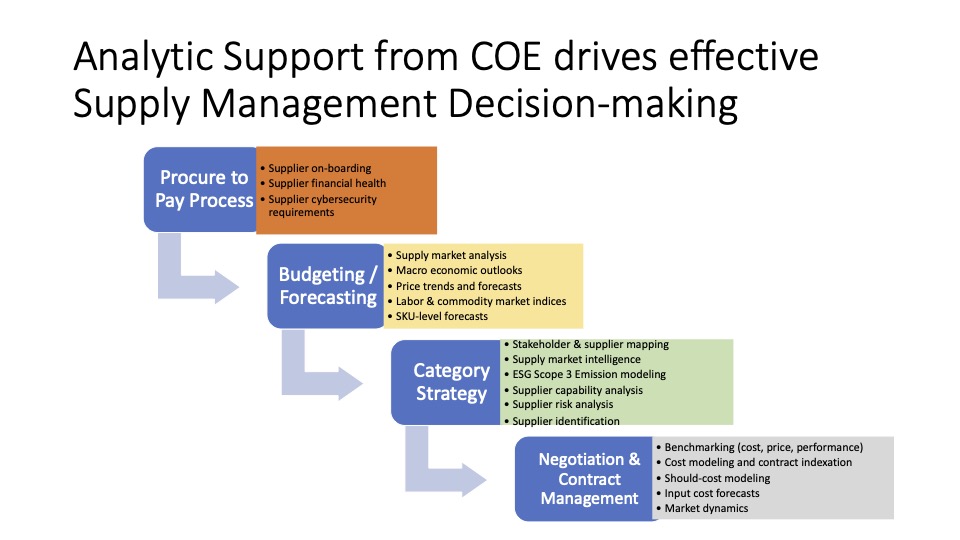Single Regression: Approaches to Forecasting : A Tutorial
Single Regression
Advanced techniques can be used when there is trend or seasonality, or when other factors (such as price discounts) must be considered.
What is Single Regression?
EXAMPLE: 16 Months of Demand History
EXAMPLE: Building a Regression Model to Handle Trend and Seasonality
EXAMPLE: Causal Modeling
h2. What is Single Regression?
- Develops a line equation y = a + b(x) that best fits a set of historical data points (x,y)
- Ideal for picking up trends in time series data
- Once the line is developed, x values can be plugged in to predict y (usually demand)

- For time series models, x is the time period for which we are forecasting
- For causal models (described later), x is some other variable that can be used to predict demand: o Promotions
- Price changes
- Economic conditions
- Etc.
- Software packages like Excel can quickly and easily estimate the a and b values required for the single regression model
h2. EXAMPLE: 16 Months of Demand History
There is a clear upward trend, but also some randomness.




Forecasted demand = 188.55 + 69.43*(Time Period)


Notice how well the regression line fits the historical data,
BUT we aren’t interested in forecasting the past…
Forecasts for May ’05 and June ’05:
May: 188.55 + 69.43*(17) = 1368.86
June: 188.55 + 69.43*(18) = 1438.29
- The regression forecasts suggest an upward trend of about 69 units a month.
- These forecasts can be used as-is, or as a starting point for more qualitative analysis.
h2. EXAMPLE: Building a Regression Model to Handle Trend and Seasonality
| Quarter | Period | Demand |
|---|---|---|
| Winter 04 | 1 | 80 |
| Spring | 2 | 240 |
| Summer | 3 | 300 |
| Fall | 4 | 440 |
| Winter 05 | 5 | 400 |
| Spring | 6 | 720 |
| Summer | 7 | 700 |
| Fall | 8 | 880 |
Regression picks up the trend, but not seasonality effects

Calculating seasonal index: Winter Quarter
- (Actual / Forecast) for Winter quarters:
- Winter ‘04: (80 / 90) = 0.89
- Winter ‘05: (400 / 524.3) = 0.76
- Average of these two = .83
- Interpretation:
- For Winter quarters, actual demand has been, on average, 83% of the unadjusted forecast
Seasonally adjusted forecast model
For Winter quarter
[ -18.57 + 108.57*Period ] * .83
Or more generally:
[ -18.57 + 108.57*Period ] * Seasonal Index
Seasonally adjusted forecasts

Comparison of adjusted regression model to historical demand

Single regression and causal forecast models
- Time series assume that demand is a function of time. This is not always true.
- Examples:
- Demand as a function of advertising dollars spent
- Demand as a function of population
- Demand as a function of other factors (ex. – flu outbreak)
- Regression analysis can be used in these situations as well; We simply need to identify the x and y values
EXAMPLE: Causal Modeling
| Month | Price per unit | Demand |
| 1 | $1.50 | 7,135 |
| 2 | $1.50 | 6,945 |
| 3 | $1.25 | 7,535 |
| 4 | $1.40 | 7,260 |
| 5 | $1.65 | 6,895 |
| 6 | $1.65 | 7,105 |
| 7 | $1.75 | 6,730 |
| 8 | $1.80 | 6,650 |
| 9 | $1.60 | 6,975 |
| 10 | $1.60 | 6,800 |
Two possible x variables: Month or Price
Which would be a better predictor of demand?

Demand seems to be trending down over time, but the relationship is weak. There may be a better model . . .

… Demand shows a strong negative relationship to price. Using Excel to develop a regression model results in the following:
- Demand = 9328 – 1481 * (Price)
- Interpretation: For every dollar the price increases, we would expect demand to fall 1481 units.
- Categories:


